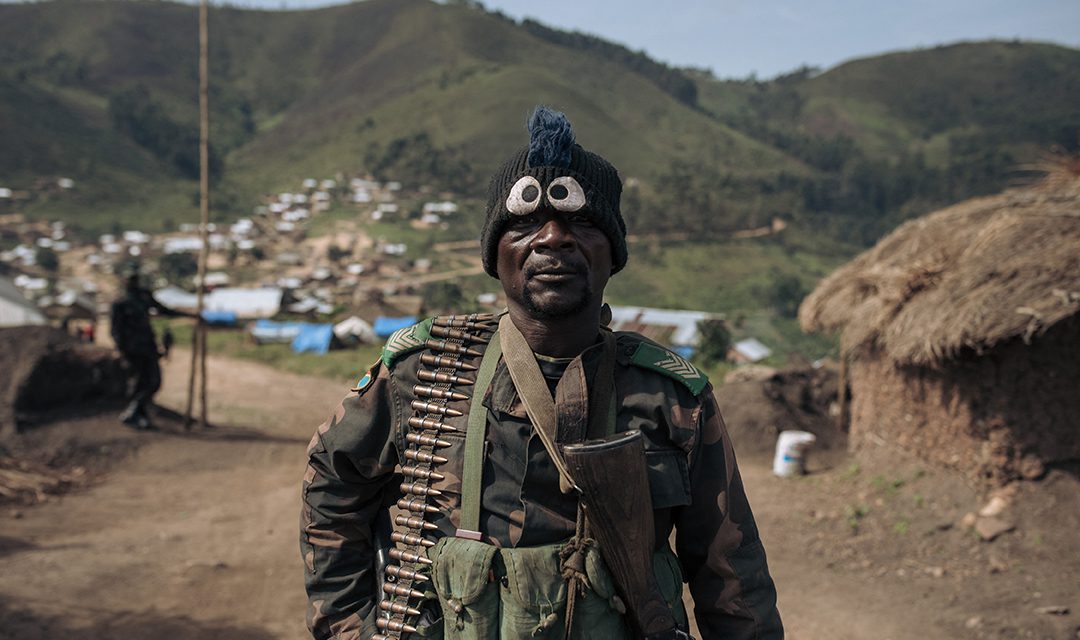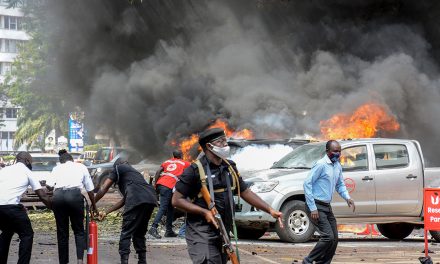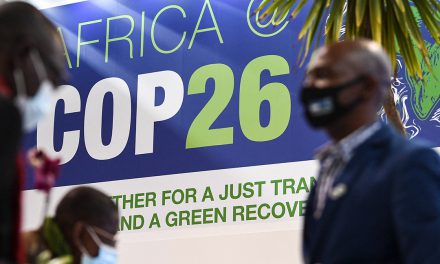The Southern African Development Community Mission in Mozambique (SAMIM) will largely complete its withdrawal from Cabo Delgado this month (July 2024), three years after its deployment.
Personnel who remain will do so primarily to facilitate the extraction of vehicles and other equipment.
The mission was difficult and not without its problems. Nevertheless, it was conceptualised, implemented, and mostly funded by SADC member states, which should be recognised as an example of a regionally owned and driven solution to a critical security problem.
Understanding its challenges and identifying areas for strengthening will help the region improve its peace and security responses.
While the mission is withdrawing from Mozambique, South African, Tanzanian and Malawian troops are six months into a new mission, the SADC Mission in the Democratic Republic of Congo (SAMIDRC).
This mission (SAMIDRC) was deployed on 15 December last year in accordance with the principle of collective self-defence and action outlined in the SADC Mutual Defence Pact (2003).
South Africa has committed 2,900 South African National Defence Force (SANDF) personnel for 12 months, while Malawi and Tanzania promise to provide the additional troops needed to make up the 5,000-strong force.
The Southern African Development Community (SADC) Mission in the Democratic Republic of Congo (SAMIDRC) followed the withdrawal of the East African Regional Force last year, which Congolese President Félix Tshisekedi had criticised for its alleged failure to take a more “offensive posture” against rebel groups.
The SAMIDRC is also taking place alongside the yearlong drawdown of the UN Mission (Monusco)—a 14,000-strong force that has been active in the DRC for over two decades.
South African troops are no strangers to the DRC, having been deployed as part of Monusco’s Force Intervention Brigade in 2013. It was the first UN peacekeeping operation specifically tasked with carrying out offensive operations—to “neutralise and disarm” rebel groups, with a focus on the Mouvement du 23 Mars (M23).
In 2009, the Congrès National Pour la Défense du Peuple entered into a peace agreement with the Congolese government. Dissatisfied with its implementation, its members splintered away to form M23, which came to the fore in 2012, claiming to represent Congolese Tutsi and Kinyarwanda-speaking minorities.
With South African air support playing a decisive factor, Monusco had early successes against M23 and managed to force the group into a ceasefire, which lasted until around 2021, when they again took up arms.
Today, the SAMIDRC operates in a more difficult environment. There are roughly 130 armed groups in North and South Kivu, constantly splintering and shifting their alliances. Their militia has been fighting for decades, is embedded within local communities, and knows the terrain, much of which is densely forested, mountainous, and inaccessible by road.
A recent UN Panel of Experts report on the situation outlines a deteriorating security and humanitarian environment fuelled by regional tension.
While Rwanda has long been accused of providing intelligence and other support to M23, the UN describes “direct and decisive” Rwandan troop involvement. This includes the Rwanda Defence Force’s deployment of advanced military equipment, which has grounded all Congolese military air assets and allowed M23 to expand the territory under its control.
Last month, two SANDF soldiers were killed and 20 wounded in M23 mortar attacks on their position, bringing the total number of South African deaths in the region to eight since February. In April a similar attack killed three Tanzanian soldiers. The SAMIDRC has racked up more casualties in six months than the SAMIM did in three years.
The objective of the SAMIDRC is to “support the government of the DRC to restore peace and security in the eastern DRC”.
This includes working unilaterally or with the Congolese army to neutralise and disarm M23 and other rebel groups. It is worth considering whether this objective is achievable.
Monusco was not able to defeat M23 in two decades. Fighting in the eastern DRC can arguably be viewed as a continuation of the unresolved aspects of the first (1996 to 1997) and second (1998 to 2003) Congo wars. In this respect, there is no real peace and security to restore.
Realistic and achievable objectives are critical for mission success. The SAMIM objectives were to neutralise the insurgent group (Ahlu Sunnah wa Jamaah), train and advise Mozambican forces, and assist them with planning and operations.
As outlined by Thomas Mandrup, associate professor at Stellenbosch University, the SAMIM was not able to meet its training and advisory objectives because the Mozambican government could not identify its training needs. The SAMIM’s joint planning with Mozambique was also undermined by the latter’s lack of transparency and inability to ensure operational security — to stop information from leaking to insurgents.
Meanwhile, in the DRC, Tshisekedi has criticised Monusco and the East African Regional Force for their failure to be more offensive. However, the missions’ mandates were intended to be complementary (not substitutionary) to the Congolese army. His criticism implies this was reversed.
The Congolese security services must take responsibility for the DRC’s security and gain a monopoly on the use of violence to create stability.
There is a risk that, if the government lacks the political will to pursue this actively, the SAMIDRC will end up in the same position as Monusco and the East African Regional Force—pursuing an unachievable task and taking all the risk with little support from the host nation.
The SANDF is underfunded despite its many domestic and regional operations. This is not a secret. Many have highlighted the problem, including South Africa’s new deputy defence minister, Thabang Makwetla, who publicly spoke about the issue last week.
In the past few years, roughly 1 500 SANDF personnel have been deployed to Cabo Delgado: 3 300 to combat illegal mining under Operation Prosper, about 2,000 to protect SA’s landward borders under Operation Corona and 800 to protect power stations and other critical infrastructure. During the July 2021 riots, 25,000 were deployed.
The SANDF has also been called on to combat gang violence in the Western Cape and assist flood victims in KwaZulu-Natal in 2020 and 2022, respectively. From 2000 to last year, the defence budget more than halved from about 2% of GDP to 0.7%. This is well below the global average of 2.2% and lower than many SADC member states—in 2022, Botswana’s was 2.7%, eSwatini’s was 1.6%, Mozambique’s was 1.5%, and Namibia’s was 3%.
Questions to the Ministry of Defence and Veterans Affairs last year revealed that, of South Africa’s original fleet of 11 Rooivalk attack helicopters, only three are now deemed “serviceable with restrictions.” Of the 39 Oryx helicopters used for transport duties, rapid deployment operations and search and rescue, only five remain serviceable.
The lack of air support and heavy-lifting capability was a limiting factor that impeded SAMIM’s offensive fighting capacity in Cabo Delgado. It will do the same in the DRC.
The SAMIDRC is a purely offensive operation, not a peacekeeping force. There is no accompanying peace process to resolve the conflict, so rebel groups will view the forces solely as supporting the Congolese government.
Similarly, the local population is likely to distrust the SAMIDRC’s motives after experiencing decades of government-allied foreign forces promising to restore security to their communities.
A critical lesson from the SAMIM experience is the importance of a robust political track (alongside military intervention) to promote conflict-resolution dialogue and address underlying drivers of fragility.
While the SAMIM won battles against Ahlu Sunnah wa Jamaah and contributed to improving security in Cabo Delgado, periods of relative calm over the last two years were not adequately exploited by Mozambique and SADC to address the causes of fragility and conflict.
These include issues common to Mozambique and the DRC, such as inter-ethnic and intra-religious tension, corruption, human rights abuses, and economic and political marginalisation.
The SAMIDRC might be able to improve security in limited regions and open up humanitarian corridors, but without an accompanying political track, military successes will be temporary and wasted.
SADC should use its current leverage, including having boots on the ground, to push for a more holistic conflict-resolution plan with both military and political tracks.
Stephen Buchanan-Clarke is a security analyst with several years' experience working in both conflict and post-conflict settings in Africa, primarily on issues of peace and security; transitional justice and reconciliation; democratisation and governance; and preventing and countering violent extremism. He currently serves as head of the Human Security and Climate Change (HSCC) project at Good Governance Africa and is a co-editor of the Extremisms in Africa anthology series.













